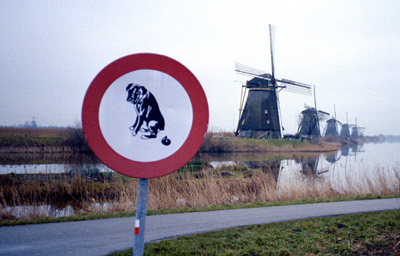

The first World Heritage Site chosen in the Netherlands, Schokland is a former island in the Dutch Zuiderzee. When the Noordoostpolder was reclaimed from the sea in 1942, Schokland ceased being an island. The remains are still visible as a slightly elevated part in the polder and by the still partly intact retaining wall of the waterfront of 'Middelbuurt'.

This defence line is the only example of a fortification based on the control of water. It was built between 1883 and 1920 and extends 135 kms around the city of Amsterdam. The protection of the center of the country was ensured by a network of 45 forts and their artillery acting in concert with temporary flooding from polders and an intricate system of canals and locks.

The Dutch established a trading settlement on the Caribbean island of Curacao in 1634.


The Wouda Pumping Station is the largest steam-pumping station ever built. It opened in 1920 and is still in operation.

The oldest area of reclaimed land in The Netherlands.

This small family house, with its interior, the flexible spatial arrangement, and the visual and formal qualities, was a manifesto of the ideals of the De Stijl group of artists and architects in the Netherlands in the 1920s, and has since been considered one of the icons of the Modern Movement in architecture.
Joint listing between Germany, the Netherlands, and Denmark. The Wadden Sea comprises the Dutch Wadden Sea Conservation Area, the German Wadden Sea National Parks of Lower Saxony and Schleswig-Holstein and most of the Danish Wadden Sea maritime conservation area. It is a large wetland environment, home to numerous plant and animal species, including marine mammals such as the harbour seal, grey seal and harbour porpoise.
A complex of factories with steel and glass facades built in the 1920s. These modernist working spaces were conceived as an "ideal factory" with lots of daylight used to provide pleasant working conditions.
One colony in Belgium and three in The Netherlands. Established in 1818, Frederiksoord (the Netherlands) is the earliest of these colonies and home to the original headquarters of the Society of Benevolence, an association which aimed to reduce poverty at the national level. Other components of the property are the colonies of Wilhelminaoord and Veenhuizen, in the Netherlands, and Wortel in Belgium.
Following the left bank of the Lower Rhine River for approximately 400 km from the Rhenish Massif in Germany to the North Sea coast in the Netherlands, the transnational property consist of 102 components from one section of the frontiers of the Roman Empire.
Lynn Salmon <>{
Last updated: September 19, 2023